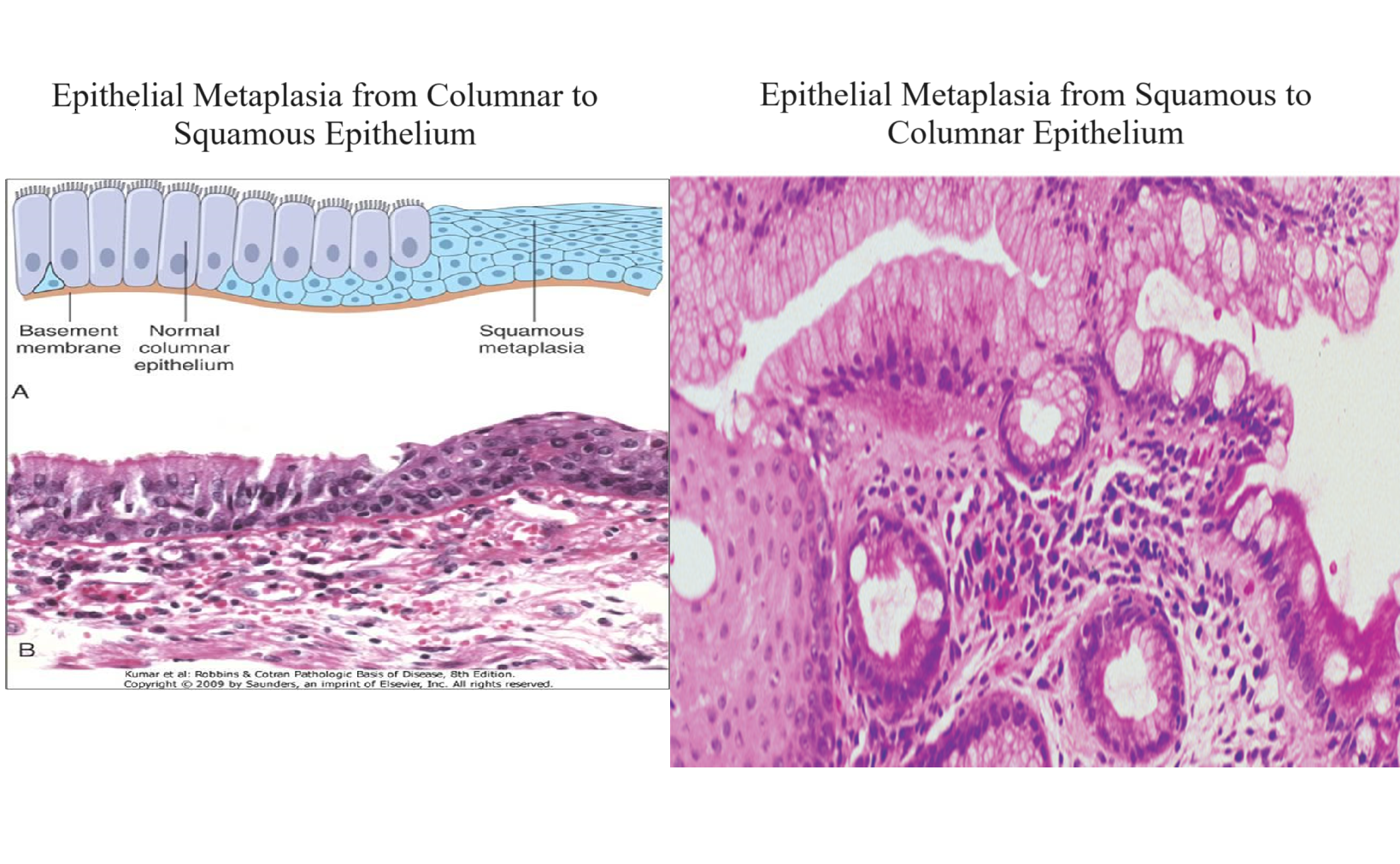2. Cellular Adaptations to Stress
1/20
Earn XP
Name | Mastery | Learn | Test | Matching | Spaced |
|---|
No study sessions yet.
21 Terms
Describe the stages in the cellular response to stress and injurious stimuli.
Normal cell undergoes stress, adapts to the stress
If the stress goes on for long, it will no longer be able to adapt and cell injury occurs
If a normal cell encounters an injurious stimulus, cell injury occurs
In both cases, if cell injury is mild/transient, it is reversible and the cell returns back to normal (homeostasis)
If the cell injury is severe and progressive, it becomes an irreversible injury
This leads to cell death by either necrosis or apoptosis
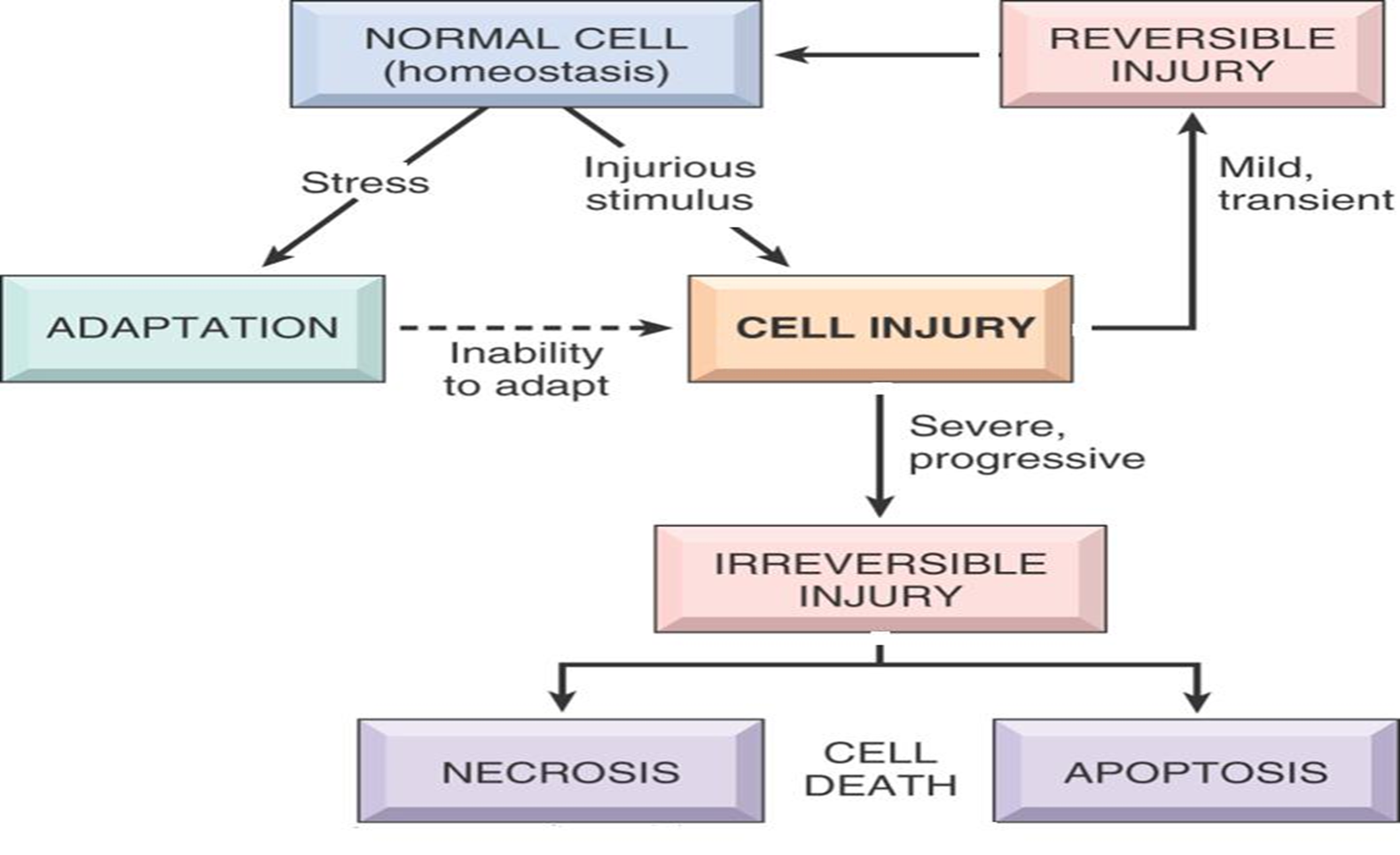
Define and describe cellular adaptation.
A state lies between normal cell and injured/overstressed cell
Adaptations are reversible changes in the size, number, phenotype, metabolic activity, or functions of cells in response to changes in their environment
What are the responses of cells to stress/injury?
Adaptive responses
Atrophy
Hypertrophy
Hyperplasia
Metaplasia
Cell injury
Reversible
Irreversible (cell death; necrosis, apoptosis)
Define atrophy.
Decrease in size of an organ due to decrease in size and no. of its cells
Decreased cell size
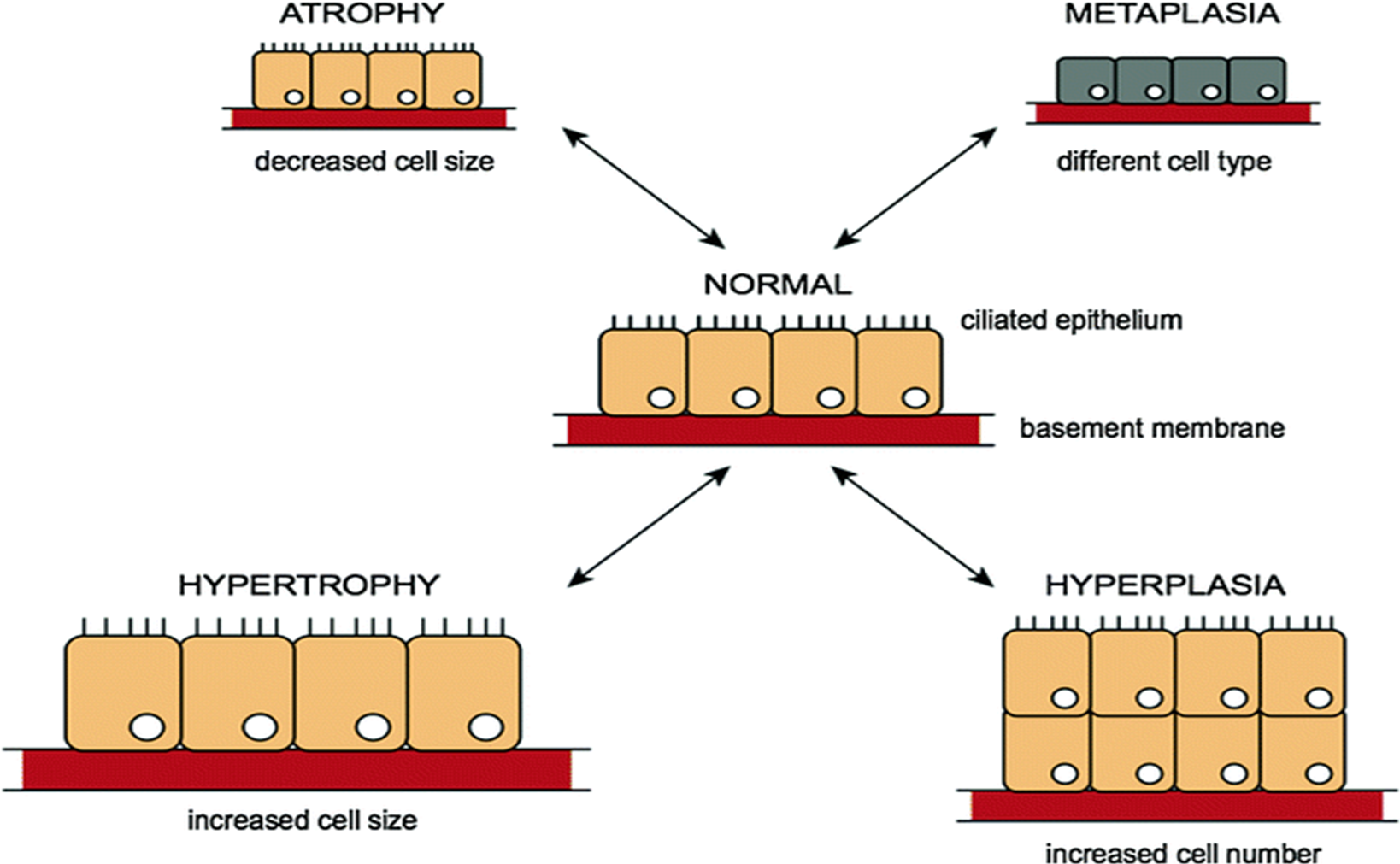
What are the two categories that atrophy is split into?
Physiologic atrophy
Pathologic atrophy
Physiological atrophy is normal. Give examples of physiologic atrophy.
Some embryonic structures undergo atrophy during development; e.g. thyroglossal duct
Uterus decreases in size shortly after menopause
Pathologic atrophy depends on underlying cause and can be local or generalized. What are the common causes/types of atrophy?
Decreased workload
Loss of nerve supply/innervation
Diminished blood supply
Inadequate nutrition
Loss of endocrine stimulation
Pressure
Describe decreased workload (atrophy of disuse).
When broken limb is immobilized in plaster cast/when patient is on bed rest, skeletal muscle atrophy appears
Is reversible once activity is resumed
Describe loss of innervation (denervation atrophy).
Normal function of skeletal muscle is dependent on its nerve supply
Damage to nerves leads to rapid atrophy of muscle fibers supplied by those nerves
Describe diminished blood supply.
Decrease in blood supply to tissue because of arterial occlusive disease results in atrophy of tissue because of progressive cell loss
In late adult life, brain undergoes progressive atrophy as atherosclerosis narrows its blood supply
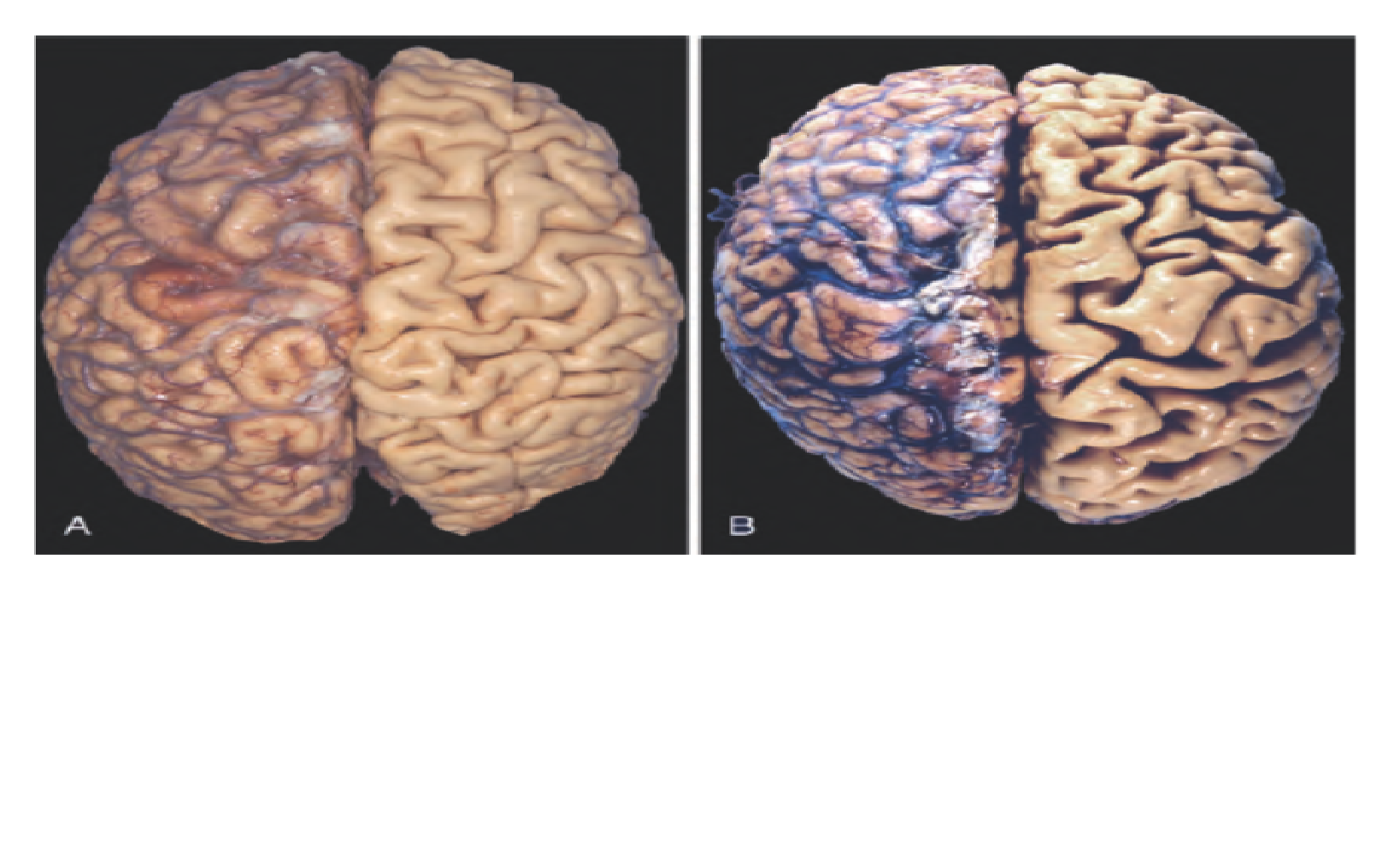
Describe inadequate nutrition.
Severe protein-calorie malnutrition (marasmus)
Causes cachexia in chronic inflammatory diseases and cancer
Describe loss of endocrine stimulation.
Loss of estrogen stimulation after menopause results in physiologic atrophy of endometrium, vaginal epithelium, and breast
It is pathologic atrophy in YOUNG women
Describe pressure atrophy.
Tissue compression for any length of time can cause atrophy
An enlarging benign tumor can cause atrophy in surrounding compressed tissues
Describe hyperplasia.
Increase in size of an organ due to increase in number of cells
Cells capable of dividing undergo hyperplasia
Hyperplasia may be physiologic or pathologic
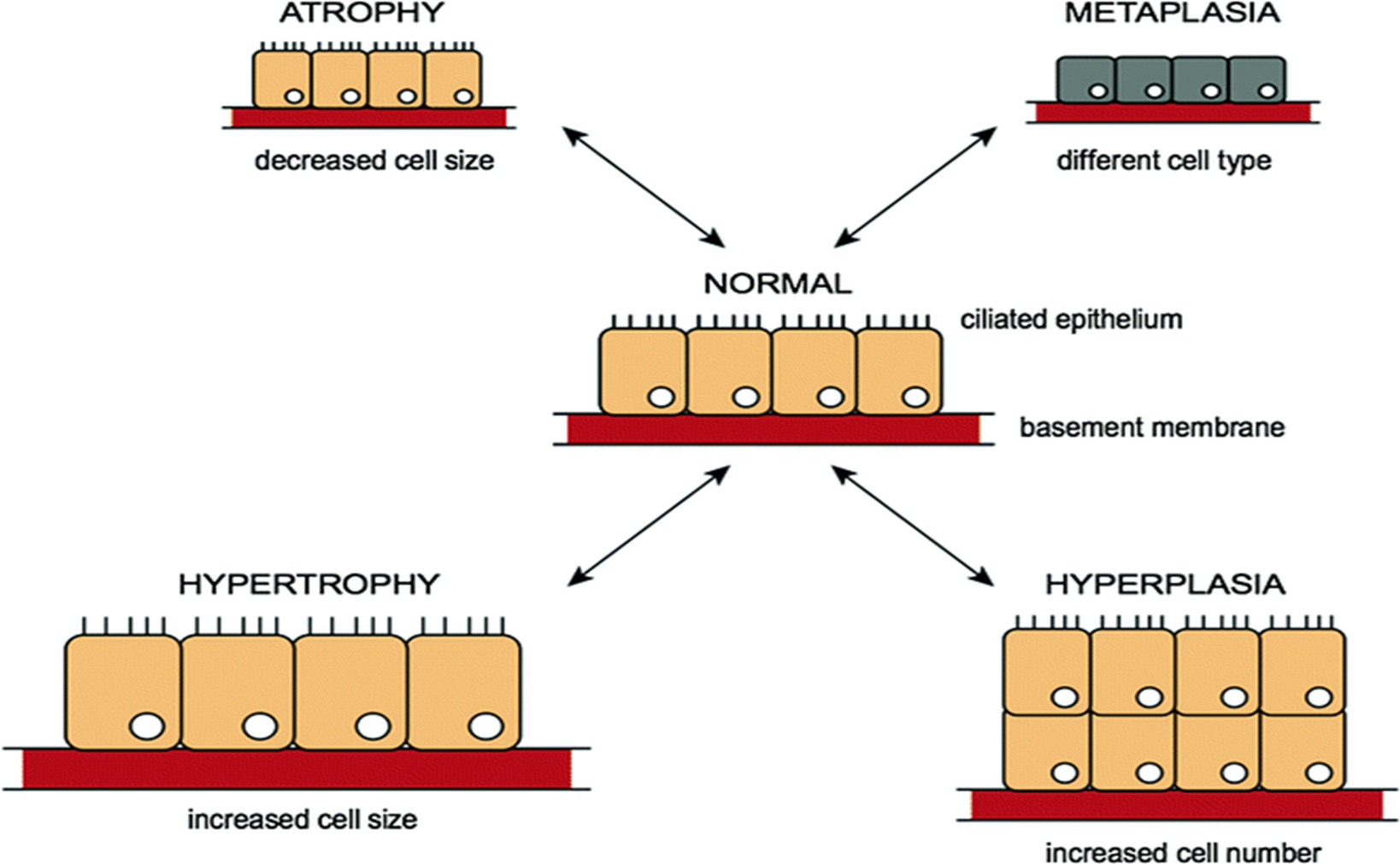
Give examples of hyperplasia being physiologic.
Enlargement of breast during puberty and pregnancy
Enlargement of pregnant uterus
Compensatory hyperplasia
Liver regeneration after donation of a lobe for transplantation
Rapid bone marrow hyperplasia in response to blood donation
Give examples of hyperplasia being pathologic.
Enlargement of prostate in benign nodular hyperplasia in elderly males
Endometrial hyperplasia due to high levels of circulating estrogen
Certain viral infections, e.g. papillomaviruses, which cause skin warts (hyperplastic epithelium)
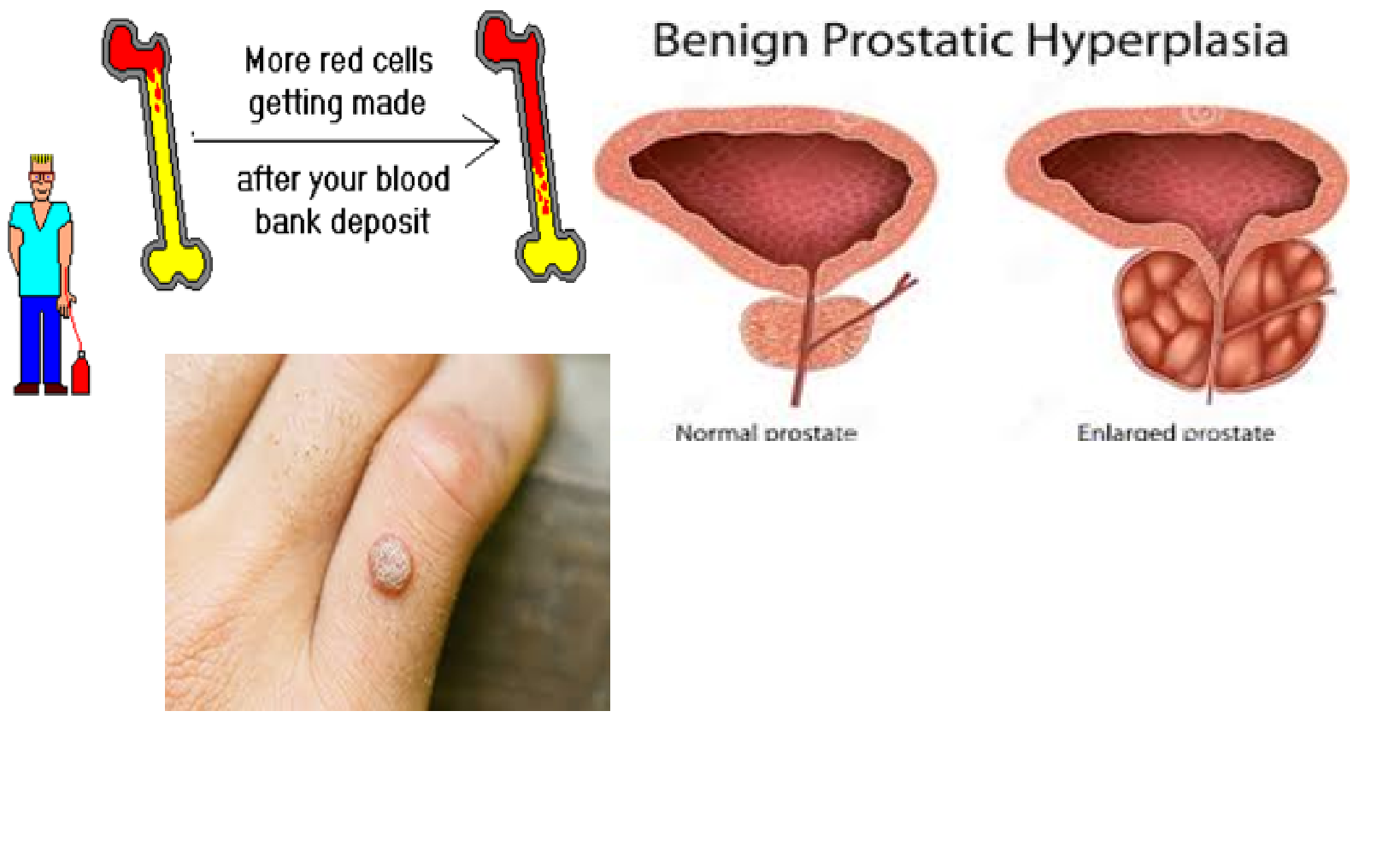
Describe hypertrophy.
Increase in size of an organ due to increase in size of the cells
Cells that are not capable of dividing cannot undergo hyperplasia, so they undergo hypertrophy and become larger in size
There are no new cells; they just grow in size
Hyperplasia and hypertrophy may occur together
Hypertrophy may be physiologic or pathologic
Give examples of hypertrophy being physiologic.
Enlargement of skeletal muscles after exercise in bodybuilders
Breast and uterus also undergo hypertrophy along with hyperplasia in pregnancy
Give an example of hypertrophy being pathologic.
Enlargement of wall of left ventricle of the heart in longstanding hypertension
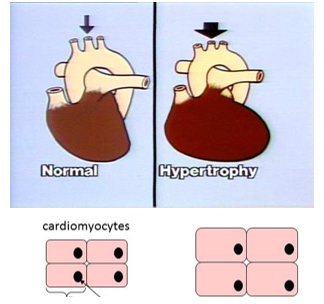
Define metaplasia.
A reversible change in which one adult cell is replaced by another cell type (function and shape)
Name and describe the 2 types of metaplasia.
Epithelial metaplasia from columnar to squamous epithelium: in habitual cigarette smoker, normal ciliated columnar epithelial cells of trachea and bronchi are often replaced focally or widely by stratified squamous epithelial cells
Epithelial metaplasia from squamous to columnar: occurs in Barrett esophagus, in which esophageal squamous epithelium is replaced by intestinal-like columnar cells, under the influence of refluxed gastric acid
